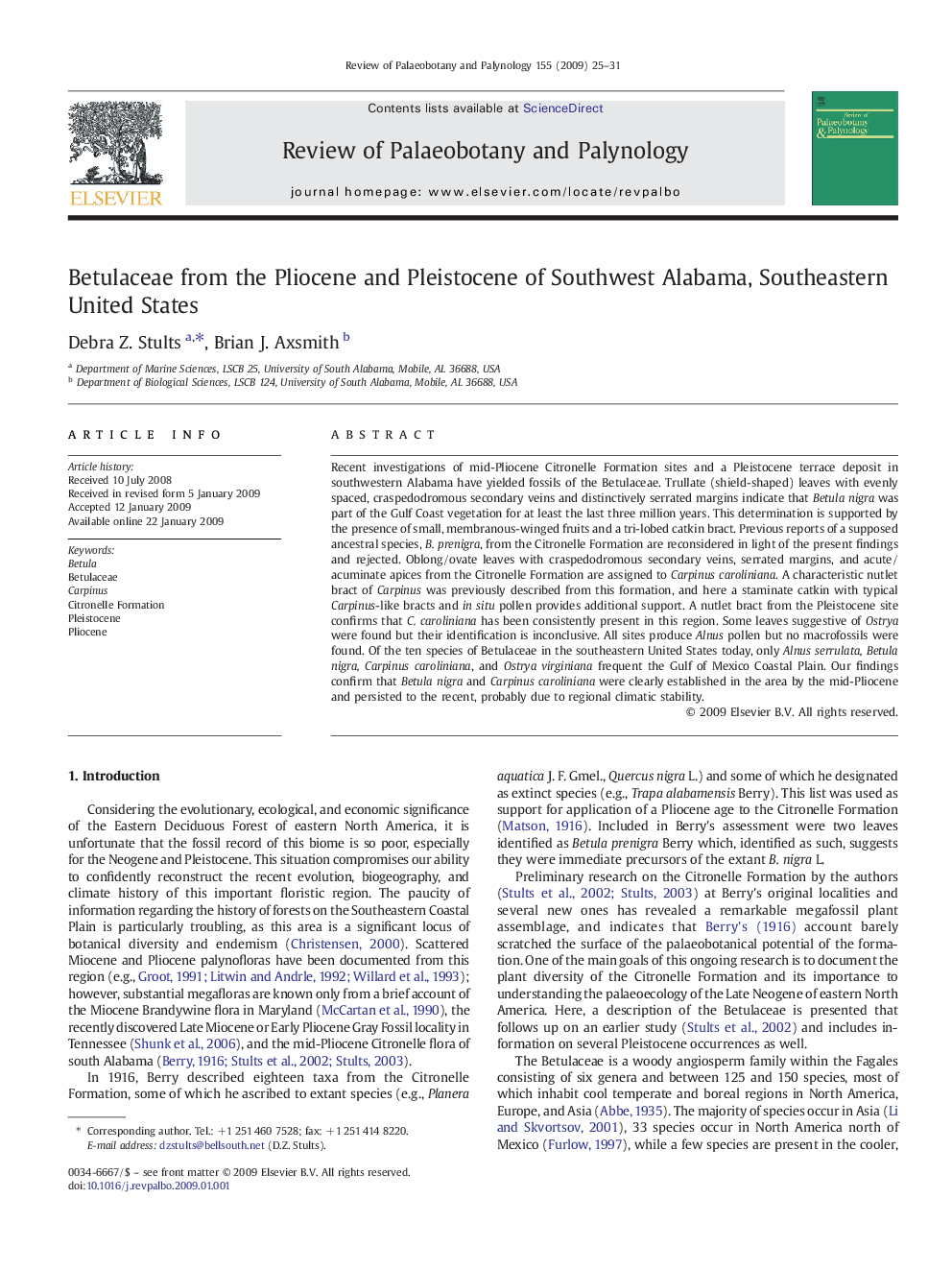| کد مقاله | کد نشریه | سال انتشار | مقاله انگلیسی | نسخه تمام متن |
|---|---|---|---|---|
| 4751060 | 1642557 | 2009 | 7 صفحه PDF | دانلود رایگان |

Recent investigations of mid-Pliocene Citronelle Formation sites and a Pleistocene terrace deposit in southwestern Alabama have yielded fossils of the Betulaceae. Trullate (shield-shaped) leaves with evenly spaced, craspedodromous secondary veins and distinctively serrated margins indicate that Betula nigra was part of the Gulf Coast vegetation for at least the last three million years. This determination is supported by the presence of small, membranous-winged fruits and a tri-lobed catkin bract. Previous reports of a supposed ancestral species, B. prenigra, from the Citronelle Formation are reconsidered in light of the present findings and rejected. Oblong/ovate leaves with craspedodromous secondary veins, serrated margins, and acute/acuminate apices from the Citronelle Formation are assigned to Carpinus caroliniana. A characteristic nutlet bract of Carpinus was previously described from this formation, and here a staminate catkin with typical Carpinus-like bracts and in situ pollen provides additional support. A nutlet bract from the Pleistocene site confirms that C. caroliniana has been consistently present in this region. Some leaves suggestive of Ostrya were found but their identification is inconclusive. All sites produce Alnus pollen but no macrofossils were found. Of the ten species of Betulaceae in the southeastern United States today, only Alnus serrulata, Betula nigra, Carpinus caroliniana, and Ostrya virginiana frequent the Gulf of Mexico Coastal Plain. Our findings confirm that Betula nigra and Carpinus caroliniana were clearly established in the area by the mid-Pliocene and persisted to the recent, probably due to regional climatic stability.
Journal: Review of Palaeobotany and Palynology - Volume 155, Issues 1–2, May 2009, Pages 25–31